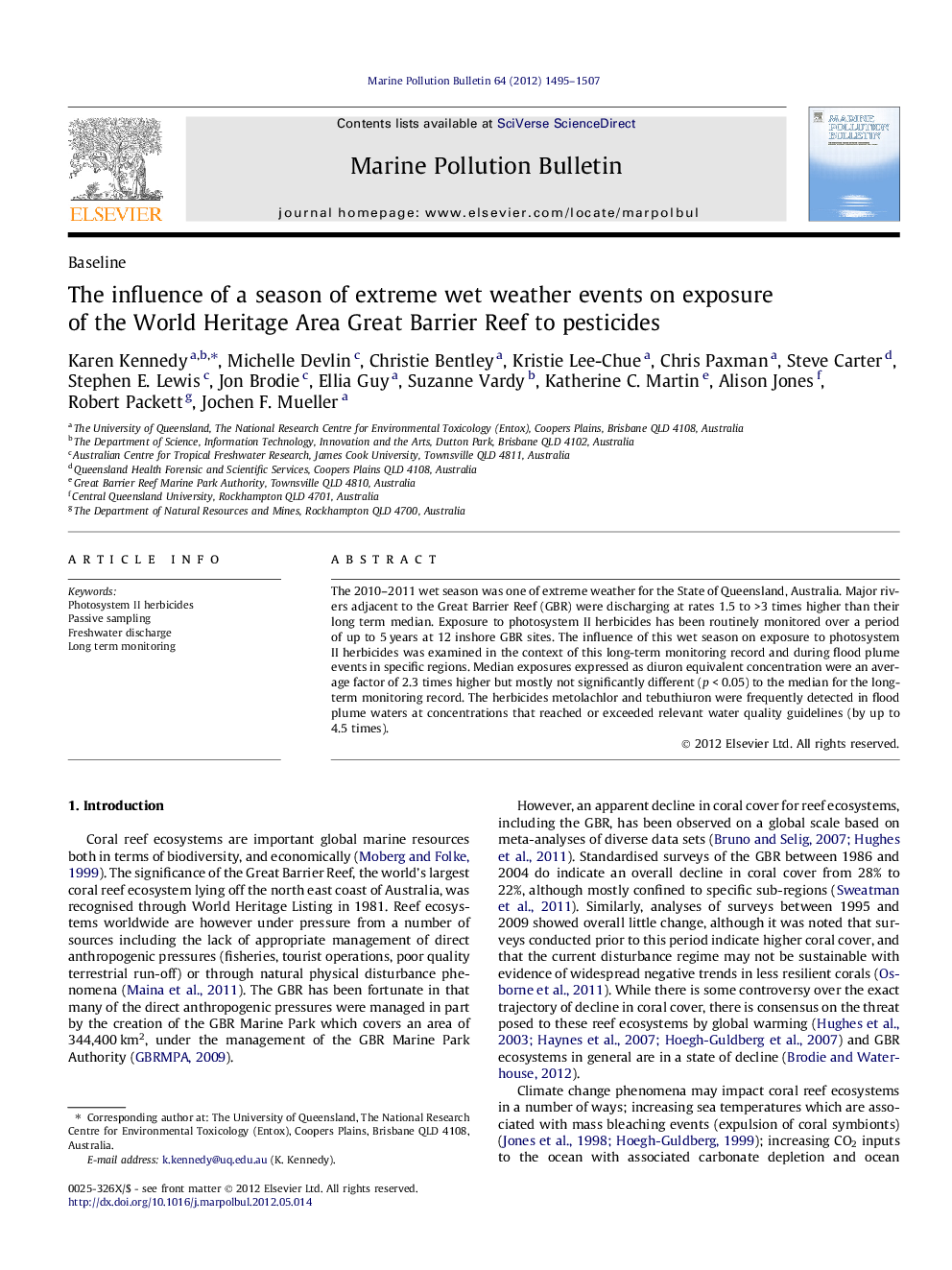| Article ID | Journal | Published Year | Pages | File Type |
|---|---|---|---|---|
| 6361614 | Marine Pollution Bulletin | 2012 | 13 Pages |
The 2010-2011 wet season was one of extreme weather for the State of Queensland, Australia. Major rivers adjacent to the Great Barrier Reef (GBR) were discharging at rates 1.5 to >3 times higher than their long term median. Exposure to photosystem II herbicides has been routinely monitored over a period of up to 5 years at 12 inshore GBR sites. The influence of this wet season on exposure to photosystem II herbicides was examined in the context of this long-term monitoring record and during flood plume events in specific regions. Median exposures expressed as diuron equivalent concentration were an average factor of 2.3 times higher but mostly not significantly different (p < 0.05) to the median for the long-term monitoring record. The herbicides metolachlor and tebuthiuron were frequently detected in flood plume waters at concentrations that reached or exceeded relevant water quality guidelines (by up to 4.5 times).
⺠Discharge derived freshwater inputs to the Great Barrier Reef were 2-15 fold over the last 10 years. ⺠Exposure to photosystem II herbicides increased by >2 at multiple routine monitoring sites. ⺠Herbicides were detected at up to 240 km from their source. ⺠Individual water quality guidelines were exceeded by up to a factor of 4.5 for tebuthiuron.
